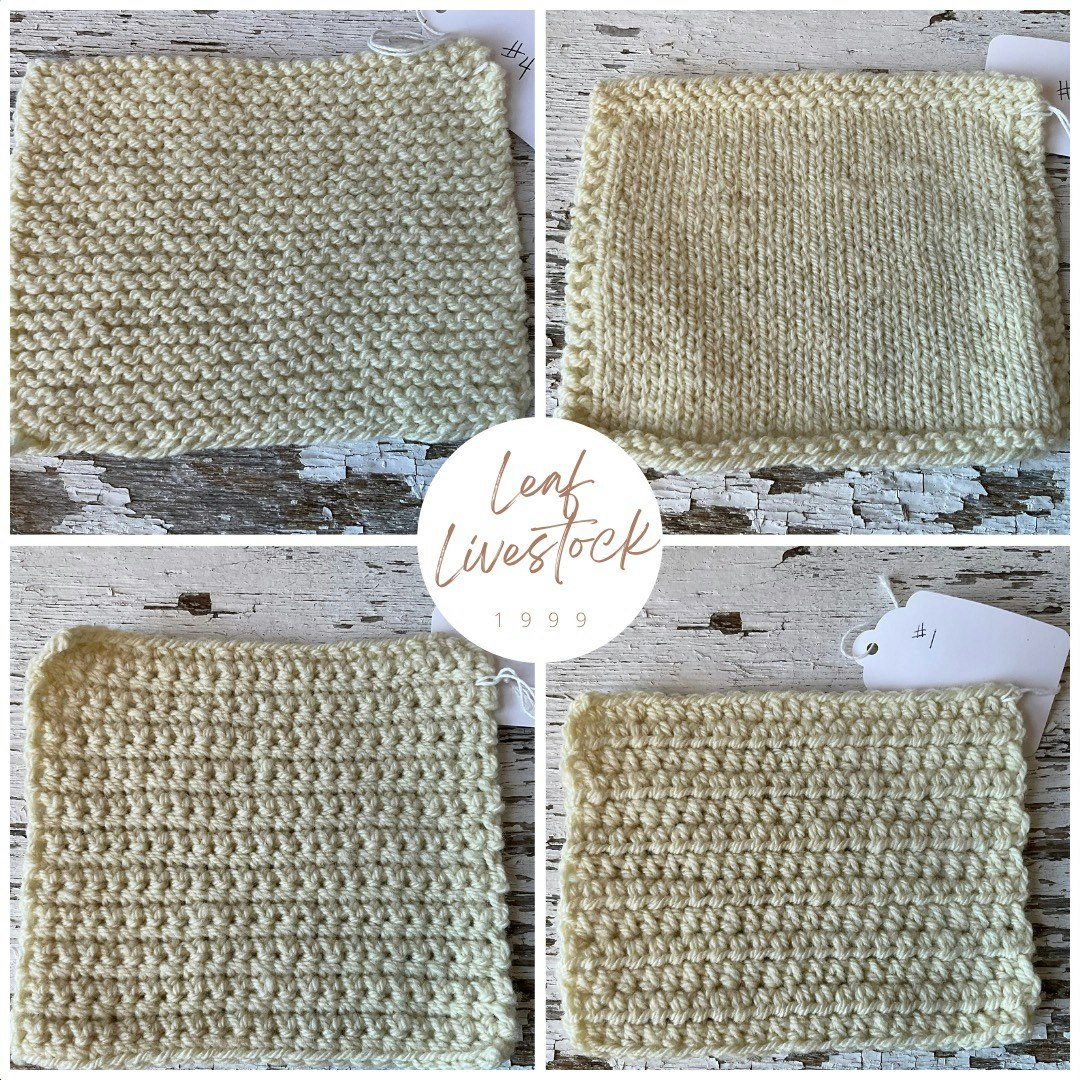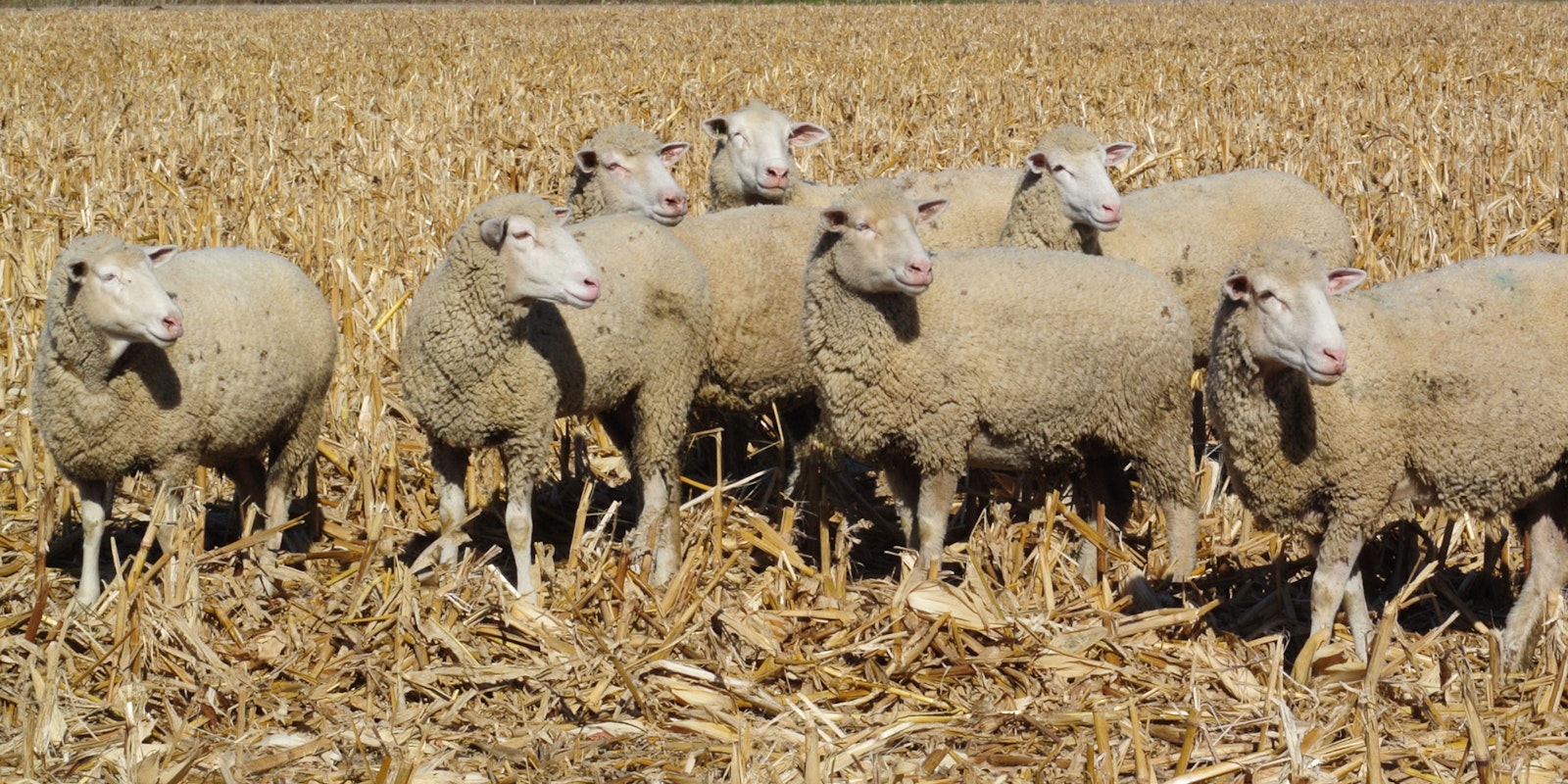Polypay sheep: What do you know about them? If you know anything at all, it’s probably as a “production” breed (what some people might call a dual-purpose or meat sheep). The American Polypay Sheep Association notes that they are well known for being great mothers who can raise multiples with less feed than a larger-framed animal. Some producers can raise three lamb crops in two years.
As far as I understand, Polypays are not well known for their wool. Why not? I’m not sure about that, because their wool is excellent. My guess is that most Polypay sheep owners are in the business to raise breeding stock and market lambs, creating income on the ewes’ ability to raise more lambs in less time. Another reason the wool is less known to crafters may be that many ranchers or shepherds don’t want to hassle with processing the wool into yarn or spinning fiber. It’s a lot of work to skirt fleece and market it to spinners or other fiber artists.
Starting with Polypay
Our family began raising Polypay sheep in 1998. My husband, fondly known as The Shepherd, did his research on sheep that provide a good commercial crop and have excellent mothering abilities. Polypay kept coming to the top of his search. Even the name is perfect: Poly = many/much, and pay = $$. For 20 years, we raised Polypays without my paying much attention to the wool, other than stuffing it into the wool bag for the shearer to haul away.
Polypays are American-made sheep. According to the Oklahoma State University Department of Animal and Food Sciences, the breeders responsible for developing this prolific animal in the 1970s used Finn for their ability to birth many lambs, their early puberty, and a short gestation period. They chose Dorset for “their superior mothering ability, [greater] carcass quality, early puberty, and long breeding season.” The Targhee breed was chosen for “their larger body size, long breeding season, and [excellent] fleeces.” Finally, they used Rambouillet genetics for “their adaptability, hardiness, productivity, and quality fleeces.”
 Known better as a production breed, Polypay sheep produce lovely wool that deserves wider attention.
Known better as a production breed, Polypay sheep produce lovely wool that deserves wider attention.
Let me tell you more about their wool. Did you notice the fabulous fiber breeds in the Polypay compilation? Each breed contributes a special feature that creates a unique opportunity for spinners.
Polypay wool is . . .
• Soft, like Rambouillet, Finn, and Targhee
• Lustrous, like Finn
• Longer-stapled, like Targhee and Rambouillet
• Strong and elastic, like Targhee
• Dense, like Dorset
• Springy, like Dorset
In other words, Polypay wool is perfect for any project you may have in mind! Another benefit I’ve noticed: Polypay wool dyes beautifully. Whether it be natural/botanical dyes or acid dyes, the wool becomes vibrant with color—yet another reason to love Polypay wool.
Even though we’ve been raising sheep for over 25 years, my Polypay fiber story didn’t start until 6 years ago. I only became interested in our sheep’s wool after we added beautiful brown naturally colored Rambouillet/Columbia crosses to our flock, and the fiber caught my eye as they were being sheared. I learned how to spin their wool into yarn, and then I learned to weave on a rigid-heddle loom. My wool story is like many fiber stories, a rabbit hole that kept deepening as one thing led to another. I now create one-of-a-kind functional, wearable art items from our wool. Once I fell in love with creating with wool, it was just a matter of time until I turned to Polypay fiber.
 Creamy white and springy, Polypay wool is a pleasure to knit and weave.
Creamy white and springy, Polypay wool is a pleasure to knit and weave.
Developing Polypay Yarns
The first time I sent Polypay wool to a mill to be processed, I had roving and yarn created. I loved the results. It’s so bouncy and soft! I enjoyed spinning the Polypay roving and then weaving with colorful or natural Polypay yarns.
A few years later, my friend encouraged me to have the mill create combed top with our fleece for her breed study. Once the combed top came home from the mill, it became a favorite by far! Customers across the country have enjoyed spinning and working with our Polypay wool. Some are interested in trying a new-to-them fiber.

My current favorite Polypay yarn is our DK 3-ply, created by Ewetopia Fiber Shop in La Farge, Wisconsin. I had the mill create 3-ply after receiving feedback from a knitter/wool-enthusiast friend; people love the rounder look of 3-ply instead of the more common 2-ply. Another batch will come home soon, this one combed into top by Zeilinger Wool Company in Michigan and then sent on to Ewetopia to be finished into yarn. My friend Beverly of Heirloom Fiber Arts Studio knitted and crocheted some samples for me, commenting on the soft, bouncy yarn. She also created durable fingerless mittens with our yarn as well. Polypay yarn is also excellent for weaving as you can see in this basic weave I created.
So have I convinced you to give Polypay wool a try?
Anne Sammons and her family own Leaf Livestock Wool Company, which raises Polypay, naturally colored Rambouillet/Columbia cross, Merino/Targhee cross, and Merino sheep in northern Illinois. Find her on Instagram as @leaflivestockwoolco.

